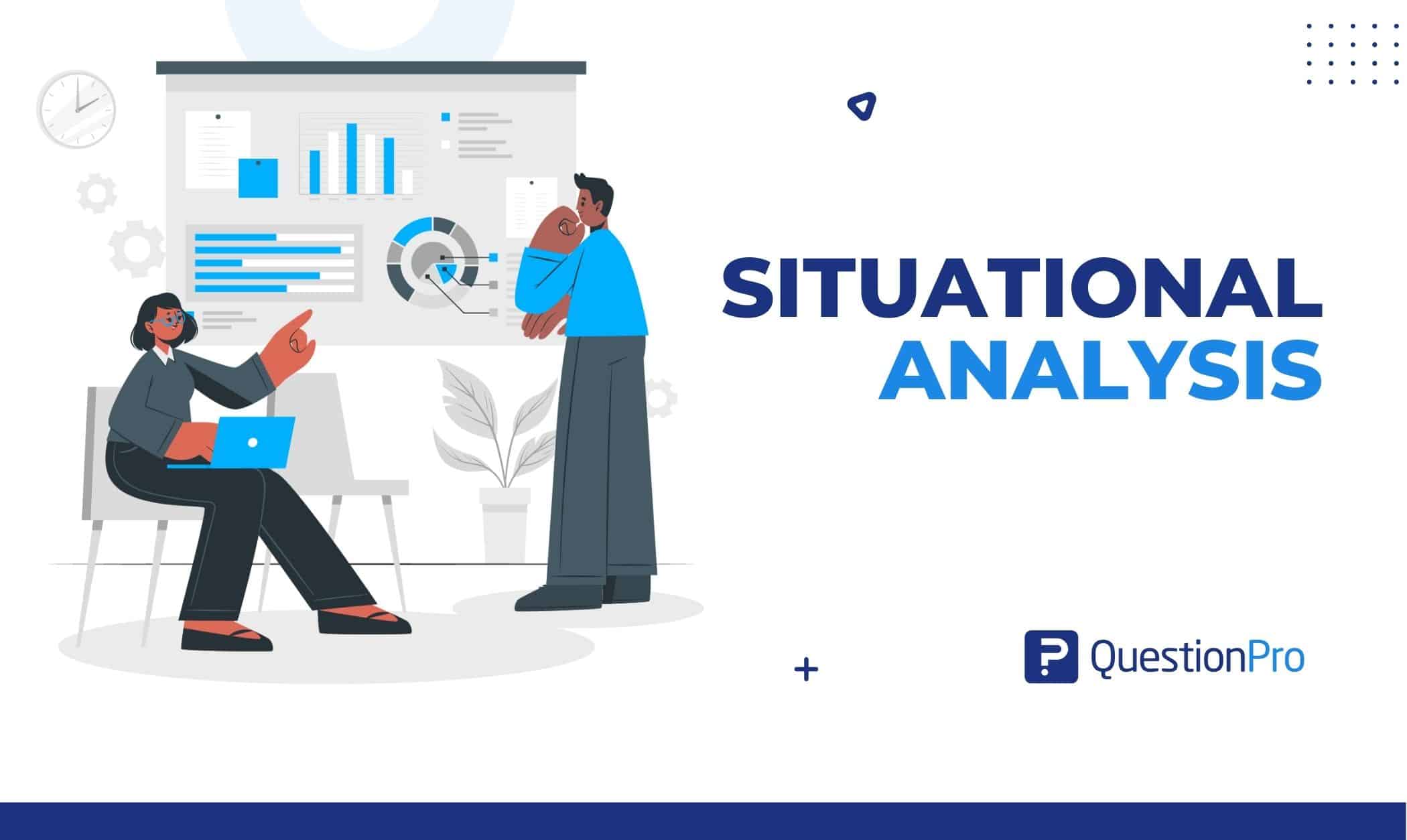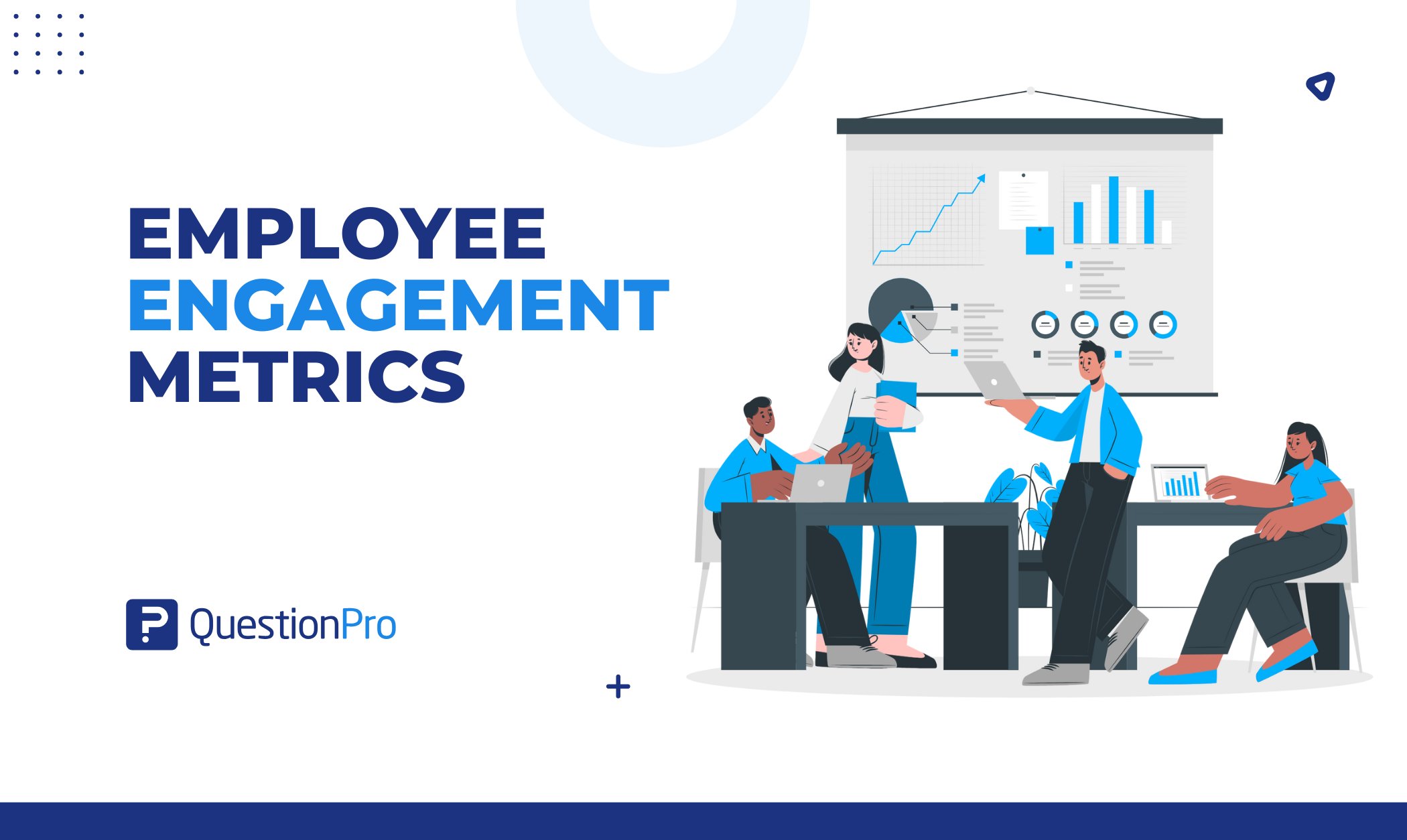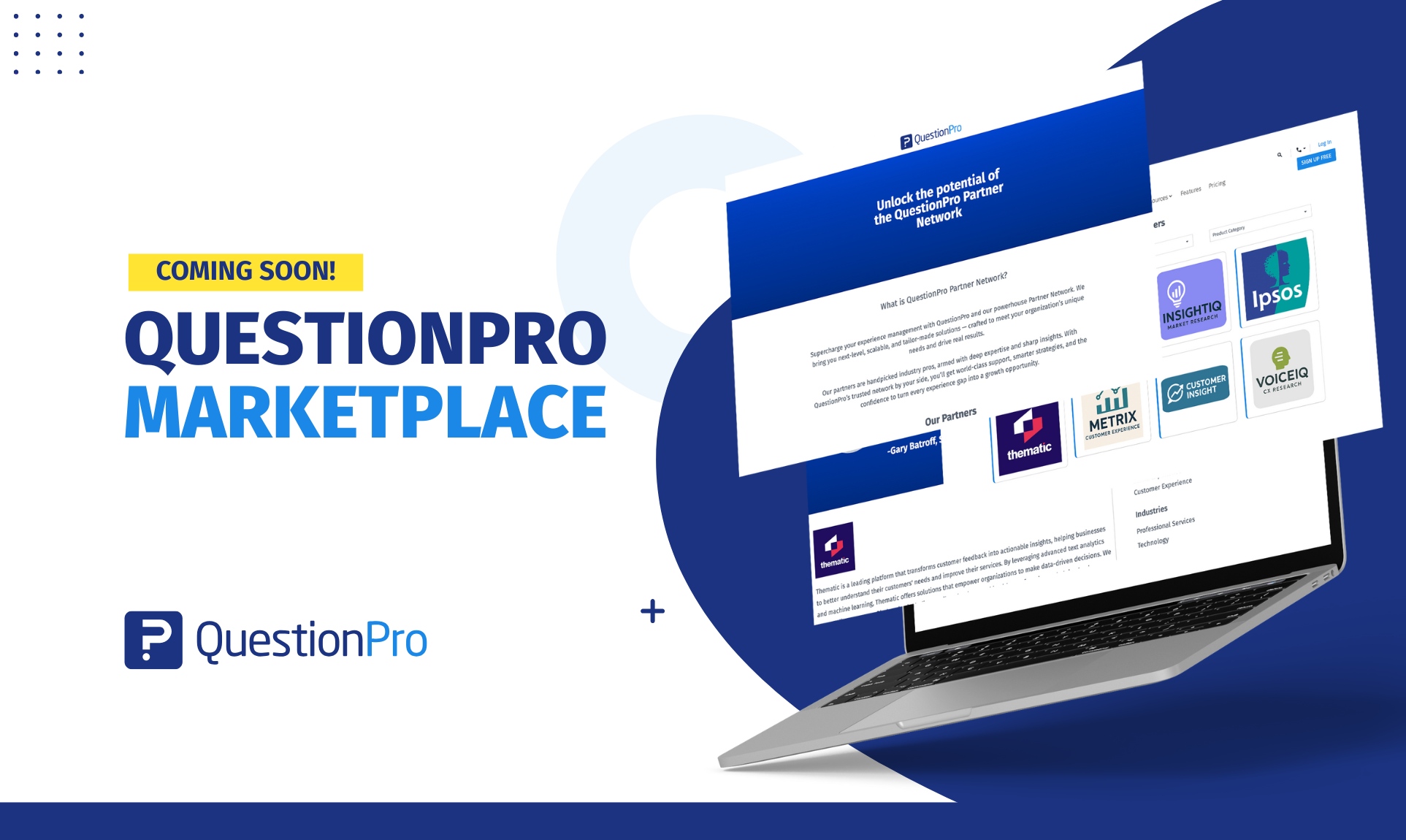
Successful companies understand how to locate and win market positions. But can every company take advantage of opportunities that may arise? Situational analysis assists a business in determining its strengths and weaknesses and how it can compete in the market.
In this blog, we will look at what situational analysis is, why it is important, and the procedure for conducting one.
What is situational analysis?
Situational analysis is the process of collecting, evaluating, and organizing information regarding an organization’s internal and external environments.
It involves evaluating the business’s strengths, weaknesses, opportunities, and threats (SWOT analysis). It may also include collecting and evaluating data about trends, consumers, competitors, and other external factors that may affect the organization.
The objective of situational analysis is to present a precise and accurate picture of the organization’s current state, which can be utilized to guide strategic planning and decision-making.
Situational analysis can be performed at any time, but it’s especially important before starting a new process or project. It helps you figure out the best way to move forward and avoid wasting time by doing things over or making wrong moves.
Why is situational analysis important in business?
Situational analysis is important for organizations because it helps them figure out where they are now and what opportunities and problems they might face. Some importance of conducting a situational analysis are as follows:
- Informing decision-making: Situational analysis helps decision-makers understand the possible results of different courses of action by collecting and analyzing information about the organization’s internal and external environment.
- Identifying strengths and weaknesses: It can help organizations understand their own strengths and weaknesses, which can help them create strategies and decide how to use their resources.
- Identifying opportunities and threats: It helps organizations find potential opportunities and threats and develop plans to deal with them by looking at trend analysis and outside factors that may affect the organization.
- Understanding the competitive landscape: As part of a situational analysis, doing a competitive analysis can help organizations understand the strengths, weaknesses, and strategies of their competitors. This can help organizations plan their own strategies.
- Providing a basis for strategic planning: It can be the basis for strategic planning and help organizations set clear smart goals and objectives by giving a complete picture of the organization’s current state.
- Getting the team involved and inspired: Great employees often leave stagnant companies because they see no use in working for the company in the long run. Situation analysis helps to spark discussion and new ideas among your team members.
- Setting business goals: Situational analysis gives organizations the insight to set achievable and beneficial objectives. Each analysis needs to have a plan for execution developed and authorized by decision-makers.
Tools and techniques of situational analysis
Organizations can use many different tools and techniques of situational analysis to evaluate and understand their internal and external environments. Here are some common types of this analysis:
1. SWOT analysis
SWOT analysis is a situational analysis process that involves evaluating strengths, weaknesses, opportunities, and threats. It’s a common approach to evaluating complicated situations.
- Strengths: Positive aspects of your company, products, services, and marketing initiatives.
- Weaknesses: Areas where your products, brand image and marketing initiatives can be improved.
- Opportunities: Includes suggestions for how you might succeed more, such as new methods of contacting customers or potential new markets.
- Threats: External factors that might have a negative impact on your profits or sales.
2. 5C’s analysis
The 5Cs analysis evaluates the internal and external factors affecting a company’s success. The 5C’s stand for:
- Company: This is about the organization’s resources, abilities, and processes.
- Customers: This refers to the people or businesses who make purchases of the company’s products or services.
- Competitors: This refers to other businesses in the same market that offer similar products or services.
- Collaborators: This refers to people or groups collaborating with the company, such as suppliers, partners, or distributors.
- Context: This refers to the organization’s operating environment as a whole, which includes economic, social, technological, and political elements.
3. Porter’s five forces
Porter’s Five Forces analysis helps companies assess their industry’s competitive forces and plan strategically based on their industry structure and suppliers’ and buyers’ power. These are the five forces:
- Competitive rivalry: It depends on how many competitors you have and how strong those competitors are. How strong your business is in the market is shown by its many competitors and how big those companies are.
- Threat of substitution: It relates to how easily a company’s product can be made again. A corporation has more market dominance and power if its good or service has no comparable alternatives.
- The threat of new entry: A company’s standing depends on how quickly new competitors can enter its field. When it’s easy to get into an industry and become a legitimate competitor, it weakens the power of all the businesses in that industry.
- Supplier power: An analysis of how easy it is for suppliers to raise prices. The number of suppliers of each vital input, their uniqueness, their size and strength, and the cost of switching suppliers determine this.
- Buyer power: An analysis of how easy it is for buyers to lower prices. The number of buyers, the importance of each buyer to the organization, and the cost of switching suppliers influence this. Few big purchasers can demand conditions from a corporation.
5. PESTLE analysis
PESTLE analysis is used to assess the external environment in which businesses operate. PESTLE stands for:
- Political: It includes the government’s stability, the regulatory environment, and any political influences on the organization.
- Economic: It includes economic growth, inflation, exchange rates, and unemployment.
- Social: It refers to the social and cultural standards and values of society, including demographics, workplace attitudes, and consumer behavior.
- Technological: It relates to an organization’s technological environment, including technological progress, change, and the impact of technology on products and services.
- Legal: It refers to an organization’s legal and regulatory environment analysis, including legislation that may affect its activities.
- Environmental: It refers to an organization’s physical environment, including its impact on the environment and how environmental challenges affect it.
5. VRIO analysis
VRIO analysis helps businesses determine which of their resources and skills are the most valuable and rare, as well as how they can be used to gain a competitive edge. VRIO framework stands for the following:
- Value: It means how much a company’s resources or skills help it create value for its customers.
- Rarity: It measures how unique a resource or skill is to the organization. If a resource or skill is hard to find, it may give you an edge over your competitors.
- Imitability: It is the degree to which another organization can copy or duplicate a resource or skill. If a resource or skill is hard to replicate, it may give you an edge over your competitors.
- Organization: It is how well a business can use its resources and skills to make money.
How to conduct situational analysis?
Conducting a situational analysis means gathering and analyzing information about an organization’s internal and external environment to understand its current situation and find potential opportunities and challenges.
Here are some steps you can take when performing a situational analysis:
01. Set the objective of the analysis
Determine the analysis’s particular goals and objectives, as well as the stakeholders that will be participating. This will assist you in concentrating your efforts and ensuring that the analysis is relevant and valuable.
02. Collect the necessary data
Gather necessary data from various sources, such as internal documents, industry reports, market research, and customer feedback. Consider using methods like interviews, surveys, and focus groups to learn more.
QuestionPro is an online survey tool to help you make better business decisions. It enables you to make the right changes with valuable analytics and insights about your workforce.
03. Analyze the data
Use situational analysis tools and techniques like SWOT analysis, 5C’s analysis, Porter’s five forces, PESTEL analysis, or VRIO analysis to figure out the most important trends, patterns, and problems that the data shows.
04. Identify the most important opportunities and challenges
Based on your analysis, list the most important opportunities and challenges the organization faces. Think about how these chances and issues will affect the organization’s goals and objectives.
05. Make suggestions and recommendations
Develop suggestions and recommendations for how the organization may take advantage of opportunities and handle challenges based on your findings. Think about the organization’s resources and competencies, as well as any potential risks or restrictions.
06. Report the findings
After reporting the analysis results, discuss the implications and recommendations with the relevant parties. Put the analysis findings to work in guiding the company’s future actions. Practical business intelligence relies on the synergy between analytics and reporting, where analytics uncovers valuable insights, and reporting communicates these findings to stakeholders.
Situational analysis can be complicated and take a lot of time, but it can give organizations valuable information and help them make smart decisions about their future.
How can QuestionPro help you in situational analysis?
QuestionPro creates and distributes surveys well. It has an easy wizard for designing survey questions, facilities for emailing or posting surveys, and tools for analyzing and viewing results. It helps organizations examine trends and patterns by gathering input and data from many individuals quickly and efficiently.
Here are some ways that QuestionPro can help businesses in situational analysis:
- Gathering customer feedback: QuestionPro survey software can collect customer feedback on product or service satisfaction, loyalty, and preferences. This can help organizations identify client demands and improve.
- Assessing employee satisfaction: QuestionPro can be used to survey employees on work happiness, engagement, and retention. This can assist companies in understanding employee demands and identifying areas for improvement.
- Identifying industry trends: QuestionPro can be used to ask industry professionals and other stakeholders about market trends and changes. This can help organizations comprehend their broader context and discover opportunities and challenges.
- Analyzing data: QuestionPro survey software contains analytics and reporting features to assist organizations in analyzing and comprehending their results. This can help organizations spot trends and make informed decisions based on the information.
QuestionPro can be a useful tool for businesses to collect and analyze data as part of a situational analysis. This helps them understand their internal and external environment and make smart decisions about their future direction.
Conclusion
Situational analysis can provide light on your company’s position in the market, what is working, what could be improved, and growth potential. Develop a marketing strategy, uncover market voids your business can fill, promote new technology, and react to rival changes using a situational analysis.
To better understand where your business is coming from and the direction it should take, modify the assessment as necessary.
QuestionPro workforce can be an excellent tool for organizations to acquire and evaluate data as part of a situational analysis, allowing them to understand their employees’ requirements and preferences better and make more educated decisions about workforce management approaches.
QuestionPro Workforce is a powerful tool for surveys and data analysis that will help you find out what process improvement surveys tell you.







